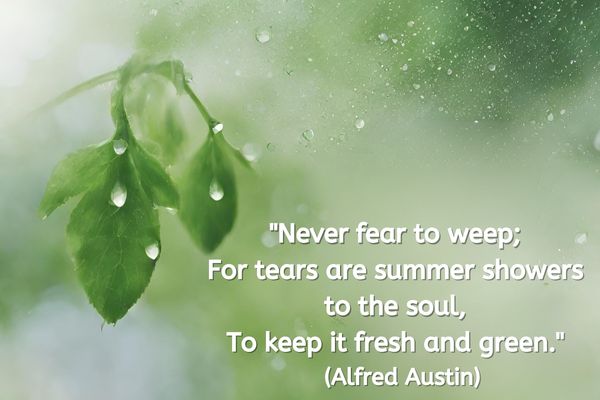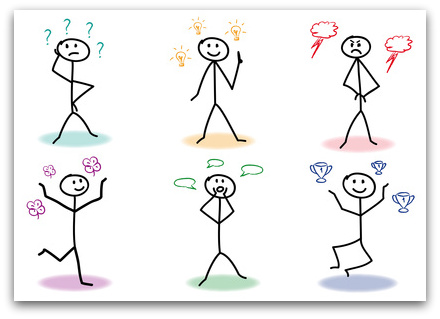Tears in Coaching: Embracing Vulnerability for Growth

Today’a quote to prompt some thoughts around a coaching related topic is:
“Never fear to weep; For tears are summer showers to the soul, To keep it fresh and green.” (Alfred Austin)
In the realm of coaching, emotions are an integral part of the human experience. Coaching is often an experience that for some clients can feel like its taking a big step into vulnerability. Today’s quote talks about the essence of embracing tears as a natural and rejuvenating expression: Whilst this may not apply to every coaches style, personally I like to ensure that I do what I can so that my coaching takes place in a safe, empathetic, and non-judgmental space where clients feel free to express their emotions, including shedding tears.
The Power of Tears:
A Natural Response:
Tears are not a sign of weakness; rather, they are a natural response to a spectrum of emotions. Whether a reaction to a poignant realization or a part of the healing process, tears convey a depth of emotion that words alone sometimes cannot capture.
An Integral Part of Healing:
Acknowledging that tears can be a significant part of the healing journey is crucial. As coaches, we must recognize and honor the role of tears in the client’s emotional landscape, understanding that they can signify a release and a step towards growth.
Creating a Safe Space:
Non-Judgmental Environment:
As a coach, I see part of my role is not just as a guide but also to create/hold/point to the space where clients can express their emotions without fear of judgment. A non-judgmental environment fosters trust, allowing clients to open up authentically and answer honestly.
Vulnerability:
Expressing vulnerability, including shedding tears, is not a sign of weakness. In fact, it is in these moments of vulnerability that clients often discover their inner strength and resilience. Encourage clients to embrace their emotions, knowing that it’s a crucial part of their personal growth journey. I’m often mindful, expecially when just starting working with a client, that it can feel like it takes a lot to turn up to such a conversation.
Comfort with Emotion:
Embracing the Show of Emotion:
Personally, I am comfortable with clients expressing a range of emotions, including tears. It’s through these authentic moments that we can delve deeper into understanding the client’s needs, desires, and challenges. Remember, I’m not saying that tears are a compulsory part of coaching, but the freedom to express them is.
Strength in Vulnerability:
Letting tears flow is a powerful act of self-expression. It allows clients to wash away emotional barriers, gaining clarity and insight. It’s a process of cleansing the window to the soul, enabling a clearer view of one’s inner self.
Reflection:
The Coach’s Comfort with Emotion:
As coaches, it’s essential to reflect on our own comfort level with clients’ displays of emotion. Are we creating an environment where clients feel safe to express themselves fully? Our comfort and acceptance contribute significantly to the client’s overall coaching experience.
Growth through Vulnerability:
Consider instances where clients have shown vulnerability, and explore how those moments contributed to their growth. Recognize the strength that can emerge from embracing emotions, reinforcing the idea that vulnerability is a pathway to resilience.
Conclusion:
In the dance between coach and client, tears can be a poignant and transformative element. As we guide individuals on their journey of self-discovery, let us remember that tears are not to be feared but embraced. They are the summer showers that keep the soul fresh and green. So, coaches, how comfortable are you with a show of emotion? In this shared space of vulnerability, let us continue to nurture growth, strength, and clarity, one tear at a time.
About Jen Waller

Jen Waller is on a mission to support, nurture and encourage coaching skills and talents from non-coach to coach and beyond.
As an experienced coach and trainer Jen is happy to utilise all skills at her disposal to assist clients from getting out of their own way and making a difference in the world with their coaching. Find out more about the support Jen offers here.



